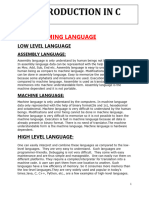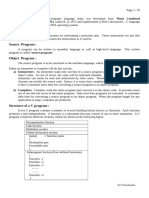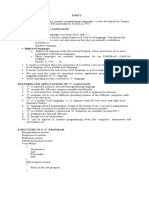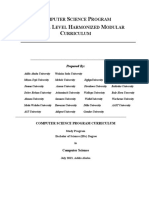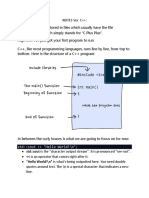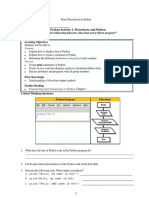0% found this document useful (0 votes)
22 views33 pagesIntroduction of C Language
C is a high-level, structured programming language used for system programming and general-purpose applications. It features a flexible syntax, supports limited data types, and allows for functions and recursion. The document also details the compilation process, the role of tokens, identifiers, constants, and operators, as well as input/output functions in C.
Uploaded by
harshatharithikaCopyright
© © All Rights Reserved
We take content rights seriously. If you suspect this is your content, claim it here.
Available Formats
Download as PDF, TXT or read online on Scribd
0% found this document useful (0 votes)
22 views33 pagesIntroduction of C Language
C is a high-level, structured programming language used for system programming and general-purpose applications. It features a flexible syntax, supports limited data types, and allows for functions and recursion. The document also details the compilation process, the role of tokens, identifiers, constants, and operators, as well as input/output functions in C.
Uploaded by
harshatharithikaCopyright
© © All Rights Reserved
We take content rights seriously. If you suspect this is your content, claim it here.
Available Formats
Download as PDF, TXT or read online on Scribd
/ 33



